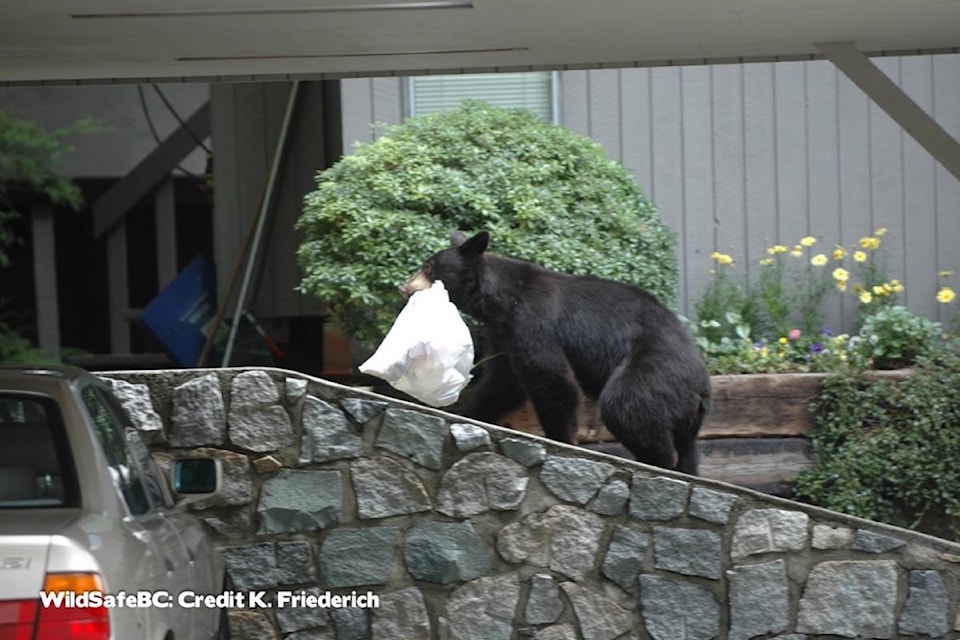There has been an unusually high number of bear sightings in Westside communities, including individual animals in the area as well as reported sightings.
That’s according to WildSafeBC Okanagan Westside coordinator Meg Bjordal, who said that black bear sightings reached 150 in June, about five times the average in the same month from 2015 to 2019.
She said the reports came from her program areas, which include West Kelowna and Peachland. But why does it seem like there are more bears in the area?
“What drives human-wildlife conflict is very complex. It’s not always well-understood and it’s difficult to have one exact reason,” she said.
“There can be all kinds of factors, from population cycle effects to availability of natural food sources, as well as factors inside the community that draw bears in.”
READ: Revelstoke bear saunters into downtown liquor store
READ: Black bear strolls into Okanagan homeowner’s living room
Bjordal said the most common thing that attracts bears into neighbourhoods is garbage. It gives them easy access to food and once they become conditioned, they start associating people with food, meaning they start to tolerate humans in close proximity which could pose safety issues.
She added that just in the last three reports she put together in 2020, whenever an attractant was identified, garbage was noted in 77 per cent of the cases.
“It’s also not safe for the bears because once they become a public safety threat, the option is for the bear to be destroyed. And no one wants to get to that, which is why we encourage people to report even just a sighting in the community. Because if we know where the bears are and intervene, we can prevent conflict from happening.”
She said the main thing residents can do is to manage their attractants by storing garbage securely in sheds, garages, or even inside the house.
“That might not sound nice, but a tip I have with any smelly kitchen waste, what you can do is freeze it… and the next important thing about garbage management is that you wait until the morning of the collection day to put your garbage out on the road rather than the night before,” she said.
“While garbage is probably the main attractant in our communities, a second is fruit trees. Managing fruit trees is essential, making sure you’re pruning them until you have a manageable harvest for your household and picking the fruit as soon as they ripen and cleaning up ground fall.”
Bjordal advised that residents should also change bird feeders into birdhouses and birdbaths instead and to manage compost bins so there is no odour that could attract bears.
READ: Okanagan community lifts up Indigenous food truck dream
